Unlocking the Genetic Mysteries of Dental Anomalies: A Comprehensive Guide for Dentists
Dental anomalies, whether acquired or inherited, play a significant role in shaping the oral health landscape. While individually rare, the collective knowledge of these conditions is crucial for dentists to navigate their practice effectively. In this guide, we’ll delve into various genetic dental conditions, exploring their causes, manifestations, and implications for patient care.

What are Genetic Dental Conditions?
Genetic dental conditions encompass a spectrum of abnormalities affecting tooth development, structure, and number. While some anomalies may be acquired due to environmental factors or dental trauma, others are inherited, arising from genetic mutations passed down through generations.
Supernumerary Teeth

Supernumerary teeth, or extra teeth, represent a common anomaly in dental development. These additional teeth can manifest in various locations within the oral cavity, including the midline (mesiodens), molars (paramolars), and bicuspids. Understanding the types and implications of supernumerary teeth is essential for accurate diagnosis and treatment planning.
Hyperdontia and Cleidocranial Dysplasia
Hyperdontia, characterized by the presence of extra teeth, often accompanies syndromes such as cleidocranial dysplasia (CCD). CCD, an autosomal dominant condition linked to chromosome #6, presents with a range of skeletal abnormalities alongside dental manifestations. From hyperdontia to delayed cranial fontanelle closure, recognizing the features of CCD is crucial for early diagnosis and intervention.
Hypodontia and Oligodontia
Hypodontia and oligodontia refer to the congenital absence of one or more teeth, posing challenges in oral function and aesthetics. Ectodermal dysplasia, linked to mutations in genes like Pax 9, offers insights into the molecular basis of missing teeth syndromes. Recognizing the genetic underpinnings of hypodontia is key to providing personalized dental care and genetic counseling.
X-linked Hypohidrotic Ectodermal Dysplasia
X-linked hypohidrotic ectodermal dysplasia presents a spectrum of abnormalities affecting ectodermal tissues, including teeth, hair, and sweat glands. From sparse hair to marked oligodontia, understanding the varied presentations of this X-linked disorder is essential for comprehensive patient management.
Taurodontism
Taurodontism, characterized by elongated pulp chambers and shortened roots, poses diagnostic challenges in dental radiography. From isolated traits to syndromic associations, exploring the genetic and environmental factors contributing to taurodontism enhances our understanding of this intriguing dental anomaly.
Fusion, Gemination, Dilaceration & Concrescence
Fusion and gemination represent developmental anomalies where adjacent tooth germs merge or split, leading to unique dental configurations. Dilaceration and concrescence further highlight the complexities of tooth development, underscoring the importance of meticulous examination and radiographic assessment in dental practice.
Hypercementosis, Screwdriver Incisors, and Mulberry Molars
Hypercementosis, screwdriver incisors, and mulberry molars offer intriguing glimpses into historical dental pathologies. While hypercementosis reflects excessive cementum formation, screwdriver incisors and mulberry molars trace their origins to congenital syphilis, emphasizing the interplay between genetics and infectious diseases in dental health.
Macrodontia, Dens in Dente, and Enamelomas
Macrodontia, characterized by abnormally large teeth, alongside dens in dente and enamelomas, underscores the structural complexities of dental anomalies. From macroscopic alterations to microscopic defects, unraveling the intricacies of these conditions enhances our appreciation of dental morphology and pathology.
Attrition (teeth wear), Erosion, and Abrasion of Teeth

Attrition (teeth wear), erosion, and abrasion represent distinct mechanisms of tooth wear, each with unique etiological factors and clinical implications. From physiological processes to pathological conditions, understanding the nuances of tooth wear enables dentists to formulate tailored preventive and restorative strategies for their patients.
Internal and External Resorption
Internal and external resorption pose challenges in dental diagnosis and treatment, necessitating a thorough understanding of their underlying mechanisms. From inflammatory responses to idiopathic phenomena, navigating resorptive processes requires interdisciplinary collaboration and advanced imaging techniques.
Dentinogenesis Imperfecta (DI)
Dentinogenesis imperfecta (DI) emerges as a paradigmatic example of genetic dental disorders, offering insights into dentin formation and mineralization. From structural abnormalities to molecular pathways, exploring the genetic basis of DI enhances our understanding of dental genetics and facilitates targeted therapeutic interventions.
Dentin Dysplasia and Regional Odontodysplasia
Dentin dysplasia and regional odontodysplasia represent enigmatic dental dysplasias with varied clinical presentations and etiologies. From genetic predispositions to environmental influences, unraveling the complexities of these conditions offers valuable insights into dental development and pathology.
Segmental Odontomaxillary Dysplasia (SOD)
Segmental odontomaxillary dysplasia (SOD) presents unique challenges in dental diagnosis and management, encompassing both dental and osseous abnormalities. From diagnostic pitfalls to treatment considerations, understanding the distinctive features of SOD enhances our ability to provide comprehensive dental care.
Amelogenesis Imperfecta (AI)
Amelogenesis imperfecta (AI) encompasses a diverse spectrum of enamel defects, reflecting genetic heterogeneity and clinical variability. From hypoplastic to hypomaturation phenotypes, unraveling the genetic basis of AI enhances our understanding of enamel formation and facilitates tailored therapeutic interventions.
Conclusion
Genetic dental conditions represent a fascinating intersection of genetics, developmental biology, and clinical dentistry. By delving into the intricacies of these conditions, dentists can enhance their diagnostic acumen, tailor treatment approaches, and provide comprehensive care to patients with diverse dental needs. Continued research and interdisciplinary collaboration are essential for unraveling the genetic underpinnings of dental anomalies and advancing personalized dental medicine.
Frequently Asked Questions about Genetic Dental Conditions
- What are genetic dental conditions?
Genetic dental conditions encompass a spectrum of abnormalities that influence the development, structure, and arrangement of teeth. They can arise from inherited genetic mutations or occur spontaneously. These conditions can affect tooth size, shape, number, and eruption patterns. - Are genetic dental conditions common?
While individual genetic dental conditions are considered rare, collectively, they constitute a significant area of study within dentistry. Although each condition may not be prevalent on its own, dentists encounter patients with various genetic dental anomalies throughout their careers. - Where can I find more comprehensive information about inherited dental conditions?
For a deeper understanding of inherited dental conditions such as ectodermal dysplasia and dentinogenesis imperfecta, resources like OMIM (Online Mendelian Inheritance in Man) provide detailed information. Additionally, textbooks on oral pathology offer comprehensive reviews of these conditions. - What are supernumerary teeth?
Supernumerary teeth are additional teeth that develop beyond the normal set. They can manifest as extra incisors, molars, or bicuspids and may occur singly or in multiples. When situated between the two central incisors, they are termed mesiodens. - What is cleidocranial dysplasia (CCD)?
Cleidocranial dysplasia is an inherited disorder characterized by skeletal abnormalities and dental anomalies. It results from mutations in the CBFA1 gene, affecting bone and tooth development. Common features include hyperdontia, delayed closure of cranial fontanelles, and skeletal abnormalities such as absent or small clavicles. - How is cleidocranial dysplasia inherited?
CCD follows an autosomal dominant inheritance pattern, meaning that a person only needs to inherit one copy of the mutated gene from either parent to express the condition. The homozygous state is typically lethal, emphasizing the importance of understanding its inheritance pattern. - What is hypodontia?
Hypodontia refers to the congenital absence of one or more teeth. It can occur as partial anodontia (fewer than six missing teeth) or oligodontia (six or more missing teeth). This condition can significantly impact dental development and function, necessitating appropriate management including possible dental implant placements. - What is the genetic basis of hypodontia?
Hypodontia often results from mutations in genes involved in tooth development, such as Pax 9. Disruptions in these genes can impede the formation of teeth beyond the bud stage, leading to congenital tooth absence. - What is X-linked hypohidrotic ectodermal dysplasia?
X-linked hypohidrotic ectodermal dysplasia is a genetic disorder affecting ectodermal structures such as teeth, hair, sweat glands, and nails. Characterized by sparse hair, reduced sweat gland function, and oligodontia, this condition significantly impacts the individual’s quality of life. - How does taurodontism affect teeth?
Taurodontism, characterized by elongated pulp chambers and shortened roots, alters the typical tooth morphology. This condition may occur in isolation or as part of syndromes like trichodentoosseous syndrome, presenting challenges in dental treatment and management. - What are fusion and gemination in dental abnormalities?
Fusion involves the union of two adjacent tooth germs, resulting in the formation of a single enlarged tooth. Conversely, gemination occurs when a single tooth germ attempts to split into two teeth, resembling twinning. These anomalies can affect tooth morphology and eruption patterns. - What is dilaceration?
Dilaceration refers to an abnormal bend or deviation in the root of a tooth, often resulting from traumatic displacement during root development. This condition can pose challenges during dental procedures and may require specialized treatment approaches. - What is concrescence?
Concrescence involves the fusion of cementum between adjacent teeth, potentially complicating tooth extraction procedures. Radiographic evaluation is essential to identify and manage this condition effectively, minimizing the risk of complications. - What is hypercementosis?
Hypercementosis is characterized by excessive cementum deposition on the root surface of a tooth, leading to a thickened appearance. While this condition may not always cause symptoms, it can complicate dental procedures and affect tooth stability. - What are screwdriver incisors and mulberry molars?
Screwdriver incisors and mulberry molars are dental abnormalities associated with congenital syphilis. These defects result from the direct invasion of tooth germs by Treponema organisms during development, highlighting the importance of prenatal screening and early treatment. - What is macrodontia?
Macrodontia refers to abnormally large teeth, which can impact both primary and permanent dentition. This condition may pose challenges in dental treatment planning and require specialized approaches to restore function and aesthetics. - What is dens in dente?
Dens in dente, also known as dens invaginatus, is a developmental anomaly characterized by the invagination of enamel into the tooth structure. While typically asymptomatic, this condition can predispose the tooth to caries and infection if not managed appropriately. - What are attrition, erosion, and abrasion of teeth?
Attrition refers to the normal wear of tooth surfaces due to mastication, while erosion involves the chemical dissolution of tooth structure, often attributed to factors like acidic foods or gastric regurgitation. Abrasion, on the other hand, results from mechanical forces causing excessive wear, typically on non-occlusal surfaces. - What is internal and external resorption of teeth?
Internal resorption involves the gradual resorption of dentin and enamel from within the tooth, often initiated by inflammatory processes within the pulp. External resorption begins on the outer surface of the root and progresses inward, potentially leading to tooth loss if left untreated. - What is dentinogenesis imperfecta (DI)?
Dentinogenesis imperfecta is an inherited condition characterized by abnormal dentin formation, resulting in discolored teeth with weakened enamel. This condition can significantly impact dental function and aesthetics, necessitating comprehensive management approaches.




